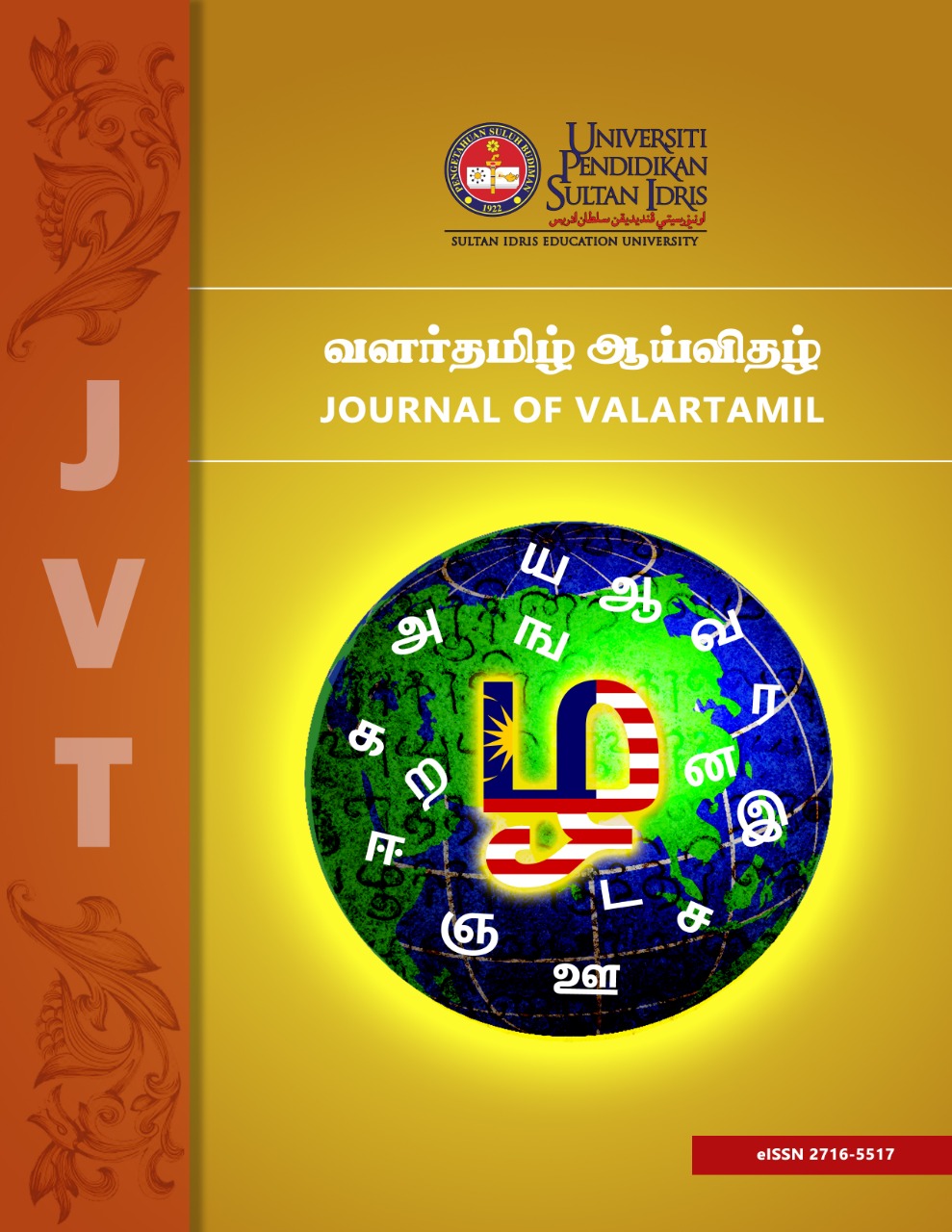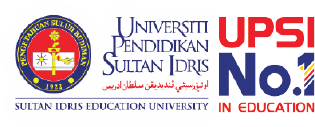A Study of using Kahoot (QUIZ) to avoid ‘Santhi’errors in writings by form two students
DOI:
https://doi.org/10.37134/jvt.vol4.2.2.2024Keywords:
Kahoot, Santhi error, writingAbstract
The researcher conducted the study using Kahoot (quiz) to avoid the 'Santhi' error in the writing of the Form 2 student. This study was conducted for high school students in Manjung district. The students subject to this study are Form 2 students. The study is based on two objectives, namely, identifying the problems faced by Form 2 students in the use of ‘Santhi’, avoiding the misconduct of ‘Santhi’ carried out by the form 2 students through use of Kahoot. The researchers used Bloom's taxonomy theory for this study. Students with the highest number of 'Santhi' errors in the mid-year essay section were selected for this study. This study was conducted to educate the students to avoid ‘Santhi’ errors in writing. This study was conducted to educate the students to avoid ‘Santhi’ errors in writing. The researchers used Bloom Anderson's theory for this study. The information contained in this study will help students to avoid ‘Santhi’ errors in writing. Students with the highest number of 'Santhi' errors in the mid-year section of the essay were selected for this study. The researchers have conducted this study in a qualitative and quantitative approach. The data required for the study will be collected with the help of the selected study instrument. The researchers will run this study for seven weeks. The information contained in this study will help students to avoid ‘Santhi’ errors in writing.
Downloads
References
Dr. Kingston Pal Thamburaj, D. K. (2020). The Use Of Mobile-Assisted Language Learning and learning Tamil grammar . Palarch’s Journal Of Archaeology Of Egypt/Egyptology 17(10),, 842-848.
Hinze, A. &.-J. (2022). A Study of Mobile App Use for Teaching and Research in Higher Education. ResearchGate, 2-4..
Ponniah, K. T. (2017). Language attitude among tamil teachers. Language attitude among tamil teachers, 142-147.
Prof. Rajendran Sankaravelayuthan, D. R. (தே.இ). தமிழுக்கானஎழுத்துப்பிழைதிருத்தியும்இலக்கணப்பிழைதிருத்தியும்உருவாகவதற்கானநுணுக்கங்கள்.
Sastri, P. S. (1943). History of Grammatical Theories in Tamil and their Relation to Grammatical literature in Sanskrit;Madras. The journal of Oriental Research, 103.
Subathini, R. (Mar-1990). தமிழ்மொழியில்லகரமெய்யீற்றுப்புணர்ச்சி-அன்றும்இன்றும்1 -. நேமி12;15;24.
Batumalai, g. (2022). A study of mobile app use for teaching and research in higher eduacation
Harun, H., & Kabilan, M. K. (2020). Errors in writing made by Malaysian rural primary school pupils. Studies in English Language and Education, 7(2), 438-456.
Thamburaj, K. P., Arumugum, L., & Samuel, S. J. (2015, August). An analysis on keyboard writing skills in online learning. In 2015 International symposium on technology management and emerging technologies (ISTMET) (pp. 373-377). IEEE.
Thambi, F. J. S. (2015). Use of–la in Simple Sentences among Indian Ethnic group in Malaysia. Mediterranean Journal of Social Sciences, 6(6 S2), 122.
Annamalai, M. (2012). Kaddurai Eluthum Eliya Anugumurai.
Kartheges, P. (2017). Pemikiran kritis dan amalannya dalam masyarakat India berpendidikan Tamil di Malaysia berpandukan teks Tirukkuṟaḷ/Kartheges Ponniah (Doctoral dissertation, University of Malaya).
Muniisvaran, K. & e.t.s. (2019). Analyzes the film criticism by using the theory of textualism [பத்திகருத்தியல்கோட்பாட்டின்வழிவிமர்சனக்கட்டுரை]. Muallim Journal of Social Sciences and Humanities, 467-474.
Sivanadhan, I. & e.t.s (2019). The teaching of Thirukkural based on HOTS among the students of Tamil primary schools in the state of Perak. International Journal of Advanced and Applied Sciences, 6(2), 94-101.
Kanapathy, K., & e.t.s. (2023). A Critical Analysis on Universiti Pendidikan Sultan Idris Tamil Unit Student-Teacher Teaching Practice Experiences: A New Case Study Approach. Evaluation Studies in Social Sciences, 4(2), 7-18.
Kumala, B. P., Aimah, S., & Ifadah, M. (2018, July). An Analysis of Grammatical Errors on Students' Writing. In English Language and Literature International Conference (ELLiC) Proceedings (Vol. 2, pp. 144-149).
Chodorow, M., Tetreault, J., & Han, N. R. (2007, June). Detection of grammatical errors involving prepositions. In Proceedings of the fourth ACL-SIGSEM workshop on prepositions (pp. 25-30).
Royani, S., & Sadiah, S. (2019). An Analysis of Grammatical Errors in Students’ Writing Descriptive Text. PROJECT (Professional Journal of English Education), 2(6), 764-770.
Miko, A. J. (2018). Analysis of students grammatical errors in writing (Doctoral dissertation, UIN Ar-Raniry BANDA ACEH).
Promsupa, P., Varasarin, P., & Brudhiprabha, P. (2017). An analysis of grammatical errors in English writing of Thai university students. Hrd Journal, 8(1), 93-104.
Ma’mun, N. (2016). The grammatical errors on the paragraph writings. Vision: Journal for Language and Foreign Language Learning, 5(1), 95-131.
Abushihab, I. (2014). An analysis of grammatical errors in writing made by Turkish learners of English as a foreign language. International Journal of Linguistics, 6(4), 213
Downloads
Published
How to Cite
Issue
Section
License
Copyright (c) 2023 Kayalvili Elangovan

This work is licensed under a Creative Commons Attribution-NonCommercial-ShareAlike 4.0 International License.





